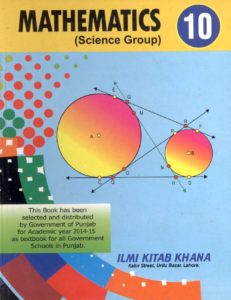
The 19th Century noticed an unheard of growth inside the breadth and complexity of mathematical ideas. Each France and Germany were stuck up inside the age of revolution which swept Europe in the overdue 18th Century, however the two nations treated arithmetic pretty differently.
After the French Revolution, Napoleon emphasized the sensible usefulness of mathematics and his reforms and military goals gave French arithmetic a big improve, as exemplified by “the 3 L’s”, Lagrange, Laplace and Legendre (see the segment on 18th Centuryarithmetic), Fourier and Galois.
Joseph Fourier’s take a look at, at the beginning of the 19th Century, of limitless sums in which the terms are trigonometric capabilities were another essential improve in mathematical analysis. Periodic functions that may be expressed as the sum of an infinite collection of sines and cosines are known nowadays as Fourier series, and they’re nonetheless effective tools in pure and applied mathematics. Fourier (following Leibniz, Euler, Lagrange and others) additionally contributed toward defining precisely what is meant by using a feature, although the definition that is determined in texts these days – defining it in terms of a correspondence between factors of the area and the range – is generally attributed to the nineteenth Century German mathematician Peter Dirichlet.
In 1806, Jean-Robert Argand posted his paper on how complicated numbers (of the shape a + bi, where i is √-1) can be represented on geometric diagrams and manipulated using trigonometry and vectors. Even though the Dane Caspar Wessel had produced a completely comparable paper on the give up of the 18th Century, and even though it become Gauss who popularized the practice, they’re nonetheless recognized these days as Argand Diagrams.
The Frenchman Évariste Galois proved inside the late 1820s that there’s no preferred algebraic approach for fixing polynomial equations of any diploma greater than 4, going further than the Norwegian Niels Henrik Abel who had, just a few years in advance, shown the impossibility of solving quantic equations, and breaching a deadlock which had existed for centuries. Galois’ work also laid the foundation for in addition traits which include the beginnings of the sphere of summary algebra, inclusive of areas like algebraicgeometry, institution theory, earrings, fields, modules, vector spaces and non-commutative algebra.
Germany, alternatively, underneath the have an impact on of the super educationalist Wilhelm von Humboldt, took a rather exclusive approach, assisting natural mathematics for its very own sake, detached from the demands of the nation and navy. It became on this environment that the younger German prodigy Carl Friedrich Gauss, every so often known as the “Prince of arithmetic”, acquired his education at the prestigious university of Göttingen. A number of Gauss’ ideas were 100 years beforehand in their time, and touched on many specific elements of the mathematical international, inclusive of geometry, number concept, calculus, algebra and probability. He is widely appeared as one of the 3 greatest mathematicians of all times, at the side of Archimedes and Newton.



